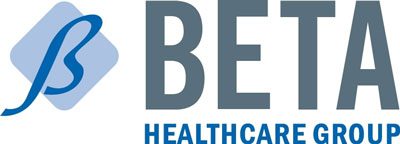BETA Healthcare Group (BETA) provides healthcare professional liability coverage to more than 200 hospitals and healthcare facilities in California. As the leading choice of liability insurers for California hospitals, BETA’s long-established commitment to California physicians continues to grow with more than 5,500 insured physicians. In addition to primary liability coverage, BETA provides an entire suite of alternative risk and insurance services, including risk management consulting, claims consulting, third-party claims administration services and excess liability coverages.
Whether it’s hospitals, medical groups, clinics or hospices, BETA has earned a reputation for financial strength, rate stability, quality service and breadth of coverage that is unparalleled in the industry. As such, finding effective solutions for improving care and safety is a goal and key part of BETA’s success.
Relias helped BETA realize an estimated reduction in obstetrical-related losses of $3.8 million for the 2011 policy year. This enabled us to return savings in the form of reduced premiums to our member hospitals while improving patient safety. APS helped us create a win-win solution for everyone concerned.”
Impact
BETA allied its “Quest for Zero” initiative with Relias Learning* to provide its members and insureds the opportunity for significant reduction in premiums each policy year.
As part of the initiative, BETA facilitated the implementation of Relias Learning content. From 2008 to 2012, BETA experienced greater than a 50% reduction in claims occurring in obstetrics after working with Relias. When Relias launched GNOSIS™ for Obstetrics, its new personalized learning platform, BETA offered it to members. Expecting to achieve similar impact in the emergency department, BETA began piloting GNOSIS for Emergency Medicine in 2014. During 2015, BETA began introducing GNOSIS to all members and insureds practicing in the emergency department and continued with GNOSIS in Obstetrics.

BETA measured the impact on OB claims frequency and severity over a five-year period throughout which the Relias program has been in use and presented a summary of at the 2014 Southern California Association for Healthcare Risk Management (SCAHRM) conference. The results are powerful. Accounting for an average “lag time” of approximately 36 months, the point at which the claim occurs to the time it is reported, BETA’s claims fell from 5.8 per 10,000 deliveries for the 2008 policy year to 2.6 per 10,000 deliveries for the 2011 policy year
Being Proactive
BETA’s Quest for Zero initiatives, including the Relias GNOSIS for OB and GNOSIS for EM, are appreciated and viewed positively by BETA’s insured hospitals and clinicians. This proactive initiative is in place to drive excellence in care, improve patient safety, and reduce the risk of preventable errors before they happen. Clinicians and hospitals are encouraged to address their specific needs and are supported to excel. BETA cites expert content, accreditation, relevance for both doctors and nurses, and ease-of-use as key criteria when choosing an education partner for its initiatives, and with GNOSIS these benefits are significantly enhanced.
The programs specifically focus on BETA’s two highest risk areas, obstetrics and the emergency department, and strive to reach zero preventable, unanticipated events resulting in patient harm.
In turn, GNOSIS has been met with interest and appreciation, as clinicians understand it is a preventive—not punitive—measure. While participation in the Quest for Zero is completely voluntary, the OB initiative in 2015 included 32 of the 40 BETA-insured hospitals with labor and delivery services opting-in and fully adopting the Relias GNOSIS for OB program.
Saving Time
Once a clinician completes his or her comprehensive assessment, GNOSIS presents the user with a personalized Learning Path. Content is presented in accredited segments and is focused on individualized areas of improvement, which ultimately saves the clinician time.
According to Heather Gocke, BS, RNC-OB, CPHRM, C-EFM, Vice President of Risk Management & Patient Safety at BETA, when using GNOSIS, as compared to other medical education programs, clinicians recognize the time-optimization component.
“The chunked content has a lot of fans,” said Gocke. “Users love that they can see specifically where to focus their attention and are happy that they can table content where they are already proficient. The two- to eight-minute segments that can be taken on-the-go have been well received, which is beneficial for voluntary programs like ours.”
Measuring Competency
Further differentiating GNOSIS, the Learning Path in each course is expanded into two types of content: knowledge and judgment. In addition to helping clinicians master specific technical skills, GNOSIS challenges them on their decisionmaking abilities.
Gocke further explains, “GNOSIS measures judgment—not just knowledge or facts. Judgment is so very difficult to capture but so important to understand.”
“GNOSIS introduces an assessment, which drastically sharpens the learning experience. It helps us identify the core issues first, and supports clinicians with information specifically targeted to those high-risk areas.”
Targeting Risk
With granular data and unprecedented insight generated from GNOSIS, hospitals and clinicians are encouraged to address their specific needs and are then supported to excel.
Adds Gocke, “In addition to these benefits for individual clinicians, we can now prospectively see multiple opportunities for improvement in distinct practice areas on a facility-by-facility basis and direct our efforts accordingly. GNOSIS has helped us see a more detailed picture of risk—but more importantly, opportunity.”
Achieving Potential
Tom Wander, CEO of BETA, concluded, “BETA strives to function as a strategic partner to our member organizations. We select and deploy the best and most effective clinical resources to help mitigate risk and improve care.
“We are proud to work with Relias to help our physicians and nurses in both obstetrics and emergency departments perform to the best of their abilities and to help us gain valuable insight into opportunities for improving patient outcomes.”







